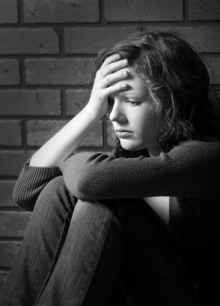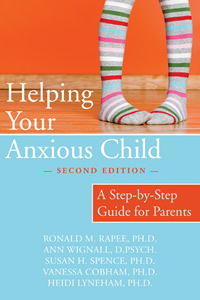Published: September 24, 2009

Image: iStockphoto
It might be obvious to many, and reading this particular press release my first reaction was …OK… it doesn’t take a rocket scientist to figure out that adolescent depression and anxiety disorders are two distinct psychiatric disorders and are classified thus in the revised fourth edition of the DSM-IV. However it has been suggested that these two disorders be given a join classification in the DSM-V. Dr. William W. Hale III(a researcher of the Langeveld Institute for the Study of Education and Development in Childhood and Adolescence at Utrecht University) and his colleagues completed a five-year study which concluded that while adolescent anxiety and depression were strongly related to one another, adolescent depression and anxiety disorder symptoms are in fact best classified as two distinct disorders.As such Hale argues that the classification of adolescent depression and anxiety disorders be preserved in the DSM-V
This publication will appear in the October issue of The Journal of Child Psychology and Psychiatry and can be found online at : http://www3.interscience.wiley.com/cgibin/fulltext/122473904/PDFSTART
Published: August 28, 2009
Almost 15 percent of preschoolers have atypically high levels of depression and anxiety, according to a new study published in The Journal of Child Psychology and Psychiatry. The five-year investigation also found that children with atypically high depression and anxiety levels are more likely to have mothers with a history of depression.
The study was conducted in Canada by an international team of researchers from the Université de Montréal, the Université Laval and McGill University, as well as Inserm (Institut national de la santé et de la recherche médicale) in France, Carnegie Mellon University in the U.S. and University College Dublin in Ireland. [continue reading…]
Published: August 19, 2009
 Yesterday we featured a post that looked at Alan E. Kasedin and Carlo Rotella’s article Bullies: They can be stopped but it takes a village”
Yesterday we featured a post that looked at Alan E. Kasedin and Carlo Rotella’s article Bullies: They can be stopped but it takes a village”
Staying within the theme, (childhood anxiety), today’s post features the updated best-selling classic Helping Your Anxious Child: A Step-by-Step Guide for Parents
A book that guides readers to help a child overcome anxiety and fears. It describes in detail strategies and techniques they can combine into a comprehensive self-help program for a child’s particular needs. From separation anxiety to general anxiety, social anxiety, specific phobia and panic disorder, Helping Your Anxious Child, Second Edition describes the common types of childhood anxiety, how anxiety originates, and options for dealing with the problem, with or without a therapist’s help.
Source: New Harbinger Publications
Katie Balestra Washington Post, takes a look at anti anxiety drugs and their problems Anti-anxiety drugs raise new fears
Benzodiazepines, often prescribed to manage anxiety, panic and sleep disorders, include Xanax, Ativan, Valium and Klonopin. Originally pushed as an alternative to barbiturates, their use has grown rapidly in the past 30 years. But critics say their long-term effects have gone largely unaddressed. Health professionals and consumers are increasingly recognizing that taking the drugs for more than a few weeks can lead to physical dependence, often ending with a grueling withdrawal. link to continue reading
The article highlights how routinely these drugs are prescribed, (in 2008, 85 million prescriptions were filled for the top 20 benzodiazepines) , and how their use has boomed. The article concludes:
Some physicians recommend that people experiencing anxiety and panic attacks exhaust other options before turning to the drugs. According to Jerilyn Ross, the director of the Ross Center for Anxiety and Related Disorders in Washington, cognitive behavioral therapy is one of the most effective ways to treat anxiety and panic disorders; she said it is effective on its own 90 percent of the time.
Source: Washington Post



